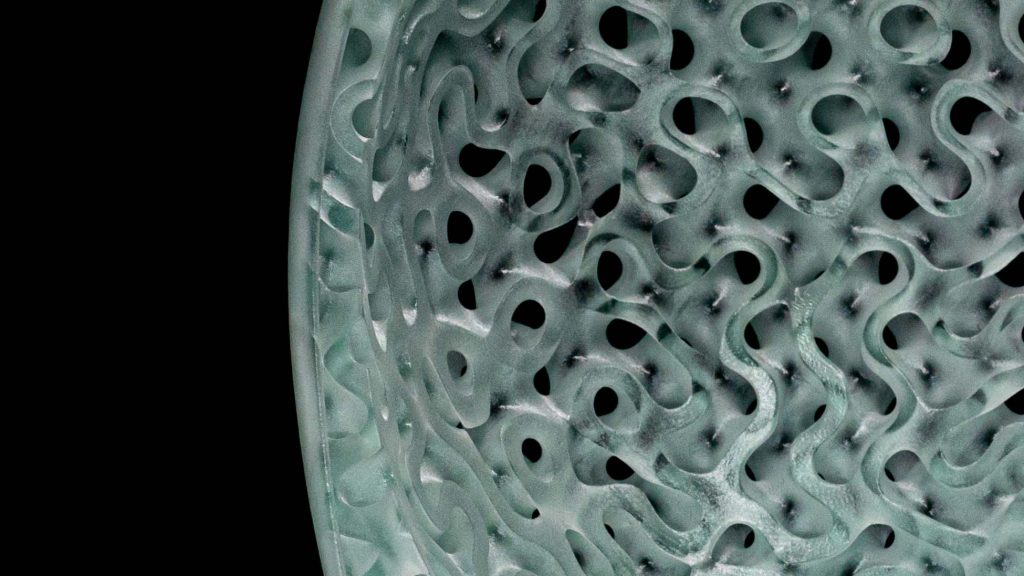We asked Hyperganic Technologies’ design director Duy-Anh Pham about AI-driven design and the increase of AI in the product development sector; what it offers to designers, and how he believes it will shape the future.
D3D: How will AI-driven design impact creativity?
D-A Pham: When talking about creativity, AI is a powerful ally. It elevates the designer to a higher level.
AI can automate repetitive tasks and give designers more time to focus on strategic design decisions. AI-components react to input, they redesign details and eliminate a lot of the tedious work.
An algorithm never competes with a designer — it‘s like a power-tool. It frees the designer to focus on the real creative work.
Algorithms complement the pen and paper work of a designer and do not replace it. The algorithms fill in the details and generate structures and functionality on the fly.
When combined with Additive Manufacturing methods on serial production 3D printers, the designer‘s vision becomes reality without restriction.
D3D: What does the future of design look like?
D-A Pham: New production methods, especially 3D printing in serial production and new materials give us so much more freedom. But the designer’s toolkit has not been keeping up with this quantum leap.
We now have the opportunity to shape this new paradigm with the help of powerful computing tools. We now have a new type of brush in our toolkit, one that allows us to paint atoms into space. Now, we have to rethink how we work, how do we want to work?
As designers we need to be curious about these new tools and ready to shape future practices. This is what we explore in the Hyperganic Lab.
We work with designers and engineers to bring their work to a meta-level where they can focus on decisions and the general approach and are not caught up in insignificant details.
You can offload decisions about details to AI components, which can be driven by creative input but also usage data by statistics, simulations, etc.
Take our helmet case study as an example: The designer designs the aesthetic overall shape of the helmet. The algorithm then combines the head scan and historical information about crash statistics to generate a custom fit helmet with optimal protection for the head.
It generates patterns based on creative choice but also on the basis of the data. As the data changes, the process self-adapts to refine the product for each person and over time.
D3D: What are the virtues of AI-driven design?
D-A Pham: There are many things a designer needs to focus on. AI is a tool that empowers you to work much more effectively.
With AI-based design you have more capacity to be strategic about your process. You can iterate quickly and often; you converge on an optimal product design much faster; you explore a bigger design space.
Your products include more complex functionality, which can be automatically generated, almost ‘painted on’.
As designers we shy away from complexity, it means a lot of work. But Additive Manufacturing allows us to build very complex objects without additional cost. So how would you design things when complexity is no longer a bottleneck?
Natural objects are amazing, but they are rarely simple designs. AI-based processes allow us to produce parts and machines just as complex as Nature. All we have to do is choose the right algorithms in the design process.
For me, AI-based design is extremely anthropocentric. Without restrictions, we can now design for human needs. Just think of the potential of mass customisation! The future of design is personalised, intelligent and sustainable.

Duy-Anh Pham always had a magnetic interest in everything computer and art. He joined a pioneering information technology high-school, worked in the IT industry for a bit and moved on studying audiovisual media at HDM-Stuttgart in 2008.
Studying creativity in theory bored him early on, so Duy-Anh joined IRIDAS in 2009 where he worked on the front-edge of software technologies for the Hollywood film industry.
In 2012 he guided Adobe’s colorgrading vision. For Adobe, Duy-Anh worked on award-winning applications like SpeedGrade CC, Premiere Pro CC and the next generation of Adobe’s Desktop & Mobile Video editing apps.
2017 he co-founded Hyperganic as the creative counterpart and since then, Duy-Anh and his team are shaping the future of AI-driven design and manufacturing.






